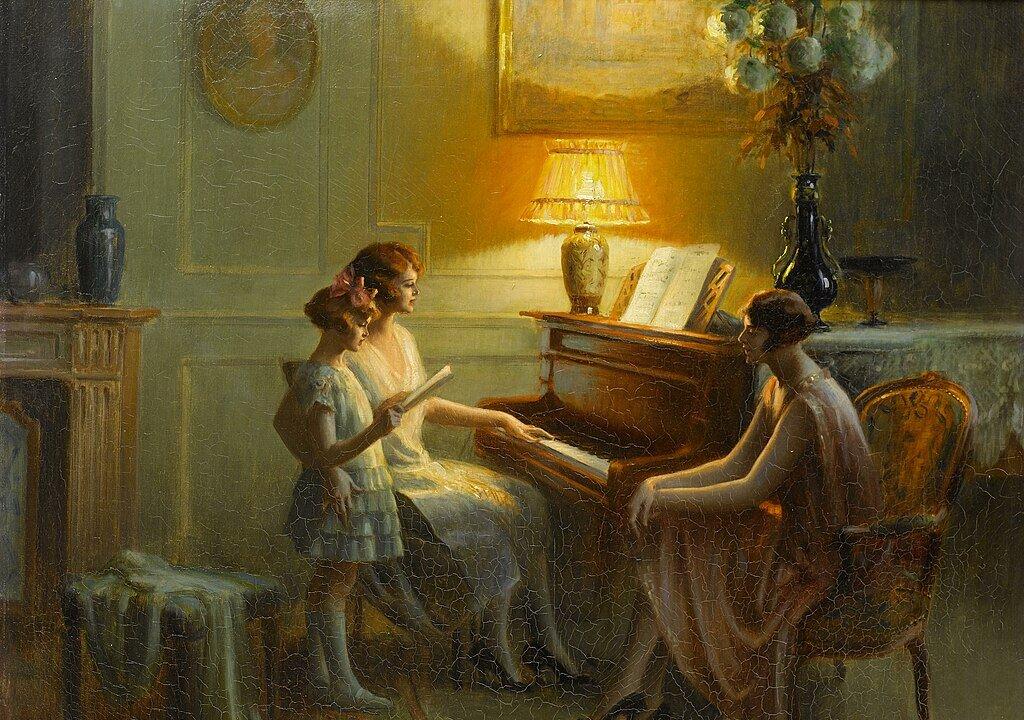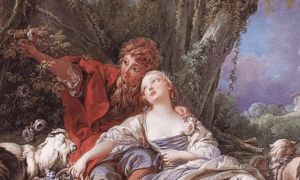Wolfgang Amadeus Mozart is recognized by historians and others as the greatest and most prolific composer in Western music. The universal beauty of his music as well as its astounding versatility make for Mozart’s unique style.
Vocal Compositions
Mozart established his career based on his own compositions in many styles, including songs. His great versatility began in childhood. As a child prodigy who toured throughout Europe, Mozart discovered the unique musical genres and styles of many countries.
Later, he combined various styles, such as Italian lyricism, with the musical style of central Europe, in his original compositions. Unfortunately, at the time, the public wasn’t receptive to the contrasts, complexities, and harmonies of his work. It was only a century after his death that the composer’s music became celebrated for its beauty and elegance, and which came to symbolize the perfection of the classical period (1750–1820).
While Mozart composed many instrumental works, notably sophisticated concertos, the key of his style lies in his vocal compositions. The classical composer loved the human voice and used it as the predominant instrument of artistic expression in his works.
Mozart is remembered particularly for his operas, based on the operatic reforms of C.W. Gluck, where the lines between the “opera seria” (“serious opera”) and the “opera buffa” (“comic opera”) blur to reveal the complexities of the human soul and relationships. Mozart combined this refined psychology with brilliant vocals, memorable melodies, and a colorful orchestra.
Mozart prodigiously innovated. He composed other vocal works, including choral pieces and art songs. Art songs, compositions for solo voice and piano based on a poem or text, were intended for a concert setting or a formal social occasion. They emerged when the genre was still in its infancy.
Forerunner of the Lied
The German tradition of art song, known as Lied, is the most prominent form of art song, and is an integral part of the Romantic music repertoire (1810–1920). While this type of art song did not exist during Mozart’s lifetime and was only formalized in 1798, the composer explored the possibilities of the genre.
It is estimated that Mozart wrote 30 art songs in total. These are some of the earliest forms of the German Lied in the concert repertoire. The composer had a great ability to merge the music with the sound and rhythm of words, grasping the sounds, inflections, and changes of the words. Mozart was one the first composers to give the song a dramatic treatment, shaping his music according to the text, foreshadowing the genre of the Romantic Lied.
Mozart’s earliest songs date from boyhood, when he was only 12. He wrote German minute songs (songs a minute long), such as “Daphne, It Is Your Rosy Cheeks” (“Daphne, deine Rosenwangen,” 1768); “To Friendship” (“An die Freundschaft,” 1722); “Secret Love” (“Geheime Liebe,“ 1722); ”The Generous Calmness“ (“Die grossmütige Gelassenheit,” 1722); and two French ariettes: ”In a Solitary Wood“ (“Dans un bois solitaire”) and ”Bird of Every Year” (“Oiseaux, si tous les ans”) during his time in Paris from 1781 to 1782.
In 1780, Mozart composed another set of songs with a notable northern German influence, reminiscent of Bach. He published four of these songs in 1789: “Evening Thoughts” (“Abendempfindung”), “To Chloe” (“An Chloe”), “The Violet” (“Das Veilchen”), and “Parting Song” (“Das Lied der Trennung”). These are probably his most famous songs.
Mozart composed his songs for many reasons: demands from music publishers, requests for social events, commissions from the aristocracy, as well as requests from friends and acquaintances. “Des kleinen Friedrichs Geburstag” (“Little Frederick’s Birthday”) was written for the birthday of Prince Frederick von Anhalt-Dessau, and “Lied beim Auszug in das Feld” (“Song Upon Departure for Battle”) was composed for the Turkish campaign by Austria under Emperor Joseph II.
Emotional Range
In his songs, Mozart explored the beauty of the human voice, combining the vocal and pianistic lines with great skill, creating instantly recognizable melodies. But what makes these songs so special is the emotional range they convey.
While these songs may look and sound deceptively simple compared to Mozart’s operas, they demand great vocal technique and artistic sensitivity. They also have the same vocal writing and dramatic sense as the composer’s well-known masterpieces. For example, “Abendempfindung” is an elegiac meditation on death, as the composer transcends the text to create an atmosphere of serene tranquility. In contrast, “Das Veilchen” is a playful setting of a poem by Goethe, where each verse offers a different mood. Both of these act as miniature operas within the context of a song.
Mozart’s songs are an integral part of his repertoire. His songs showcase his talent in both instrumental and vocal compositions, as they have an unmistakable “Mozart” sound to them. By combining voice and piano, and shaping the music according to the text, the composer created a foretaste of the German art song, which later influenced Romantic composers such as Schubert, Schumann, and Brahms.
Overall, Mozart’s songs represent the height of musical excellence with their classical perfection, artistic beauty, and universal connection. Mozart’s songs also offer the same dramatic range as his greatest operas in a more condensed way, conveying emotions people can identify with in both their brightest and darkest moments.








